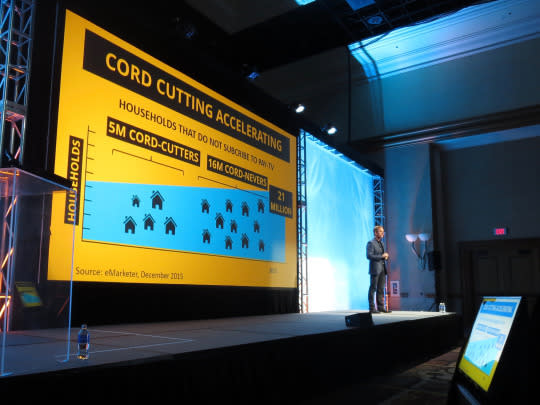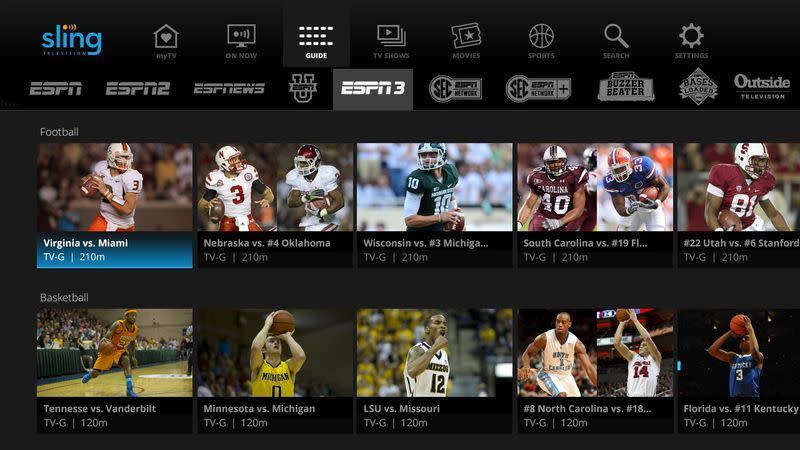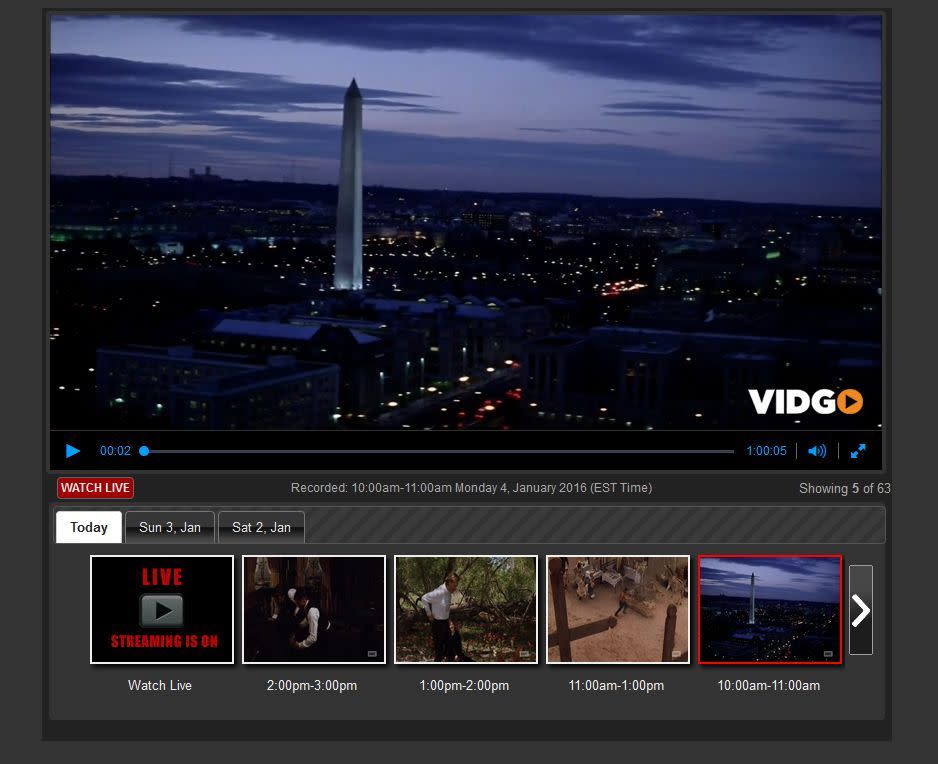The Time to Cut the Cord and Switch to Streaming TV is Now
If you’ve been thinking of dumping your cable or satellite TV service, there’s never been a better time to do that. There’s certainly no reason to wait: Your online options are likely to improve only slightly this year.
If you were hoping 2016 would be as epic for cord cutters as 2015—a year that saw Dish Network successfully introduce Sling TV and HBO finally acknowledge economic reality by selling online-only subscriptions—that news may come as a disappointment. But when much of Big Cable still thinks we actually like paying for hundreds of channels we don’t watch, merely increasing the cord-cutting audience ranks as a victory.

(Photo: Rob Pegoraro/Yahoo Tech).
Still, the biggest gaps in streaming — local TV stations and live sports — will remain largely unchanged. As for all those rumors about Apple launching its own streaming ‘Don’t call it cable’ package of channels? Still just rumors, it appears.
How ESPN learned to stop worrying and love Sling TV
Dish’s Sling TV started with a dozen channels in its core $20 package; now it offers 22, including ESPN and AMC. Sling will soon add a 23rd channel, ESPN3, and that’s bigger and better news than it might seem: The sports-broadcasting giant was worried enough about losing cable viewers that it had reserved the option to yank its channels from Sling TV. Instead, it’s adding more.
ESPN (which had to sack hundreds of staffers last year) is apparently now persuaded that Sling will win it more viewers over time. As its president John Skipper told the Wall Street Journal: “We are highly satisfied that the overwhelming majority of Sling TV subscribers are new entrants.”

Sling TV will add a third flavor of ESPN to its streaming lineup (Image: Sling TV).
At CES, Sling CEO Roger Lynch didn’t get into the specifics of its ESPN deal. But he acknowledged that networks in general needed to warm up to “over-the-top” (OTT) video services (so-called because they come over a broadband connection instead of over the air).
“Before we launched, programmers were a little nervous about what OTT would mean for the overall industry,” he told me after its press conference. “They’re way beyond that now.“
ESPN will also be coming to Sony’s PlayStation Vue service, available in select markets. Sony’s streaming offering looks more like a traditional cable bundle in that its basic package runs $49.99 and covers more than 50 channels, including local stations. But as Parks Associates research director Brett Sappington observed: “The pricing of the service makes Vue a tough sell.”
Sony might want to rethink its pricing strategy; it also needs to get this in more markets than Chicago, Dallas, Los Angeles, Miami, New York, Philadelphia, and San Francisco.
Want local stations and local sports? Tune in later… much later
But that’s the problem when you include local stations. There are a lot of them, and they’re not all equally interested in making a deal for online distribution. That might explain why the upcoming Vidgo service I saw demoed at CES will be confined to 15 markets at first. And it supplies one major reason why Apple’s long-rumored TV service, which the company presumably wants to market across the country, remains in a vaporous state.

This Vidgo screenshot includes no channel names or logos, because it’s still working on those deals (Image: Vidgo).
Sling, meanwhile, is available nationwide because it opted against dealing with local broadcasters, and the company now seems prepared to wait for those stations to come to the table. And while we might see other cable-replacement services emerge (SNL Kagan analyst Ian Olgeirson said the TV business “is closely watching Amazon”), I would bet they, too, will choose not to get hung up on local channels.
You can remedy the lack of local stations with a plain-old TV antenna, though you’ll have to fuss with its reception and then get comfortable with switching inputs on your TV. Getting around online video’s other big absence, most local pro sports teams, is not so easy.
Streaming services like baseball’s MLB.tv will gladly take your money if you want to watch some other city’s team. Your own? You’ll still have to sign up for a traditional cable or satellite bundle that includes whatever regional sports network carries the home team’s games. Sorry, home-team faithful: No cord cutting options for you.
This is delusional behavior, but the sports-industrial complex doesn’t seem to want to learn. On Tuesday, baseball announced a settlement to a lawsuit by fans that makes only minimal alterations to these regional blackouts: Out-of-town fans will no longer see their team’s games against their local team blacked out… after the All-Star break… if they pay $10 extra… and log in with a traditional pay-TV subscription password.
In 2017, this settlement will do away with most of those restrictions and only require that local viewers sign in with a pay-TV password, which I’m totally sure will never come from a friend or family member’s account.
Perhaps in another year or two after that, MLB can finally figure out what ESPN has already learned: It’s easier to shut up and take the customer’s money.
Email Rob at rob@robpegoraro.com; follow him on Twitter at @robpegoraro.


